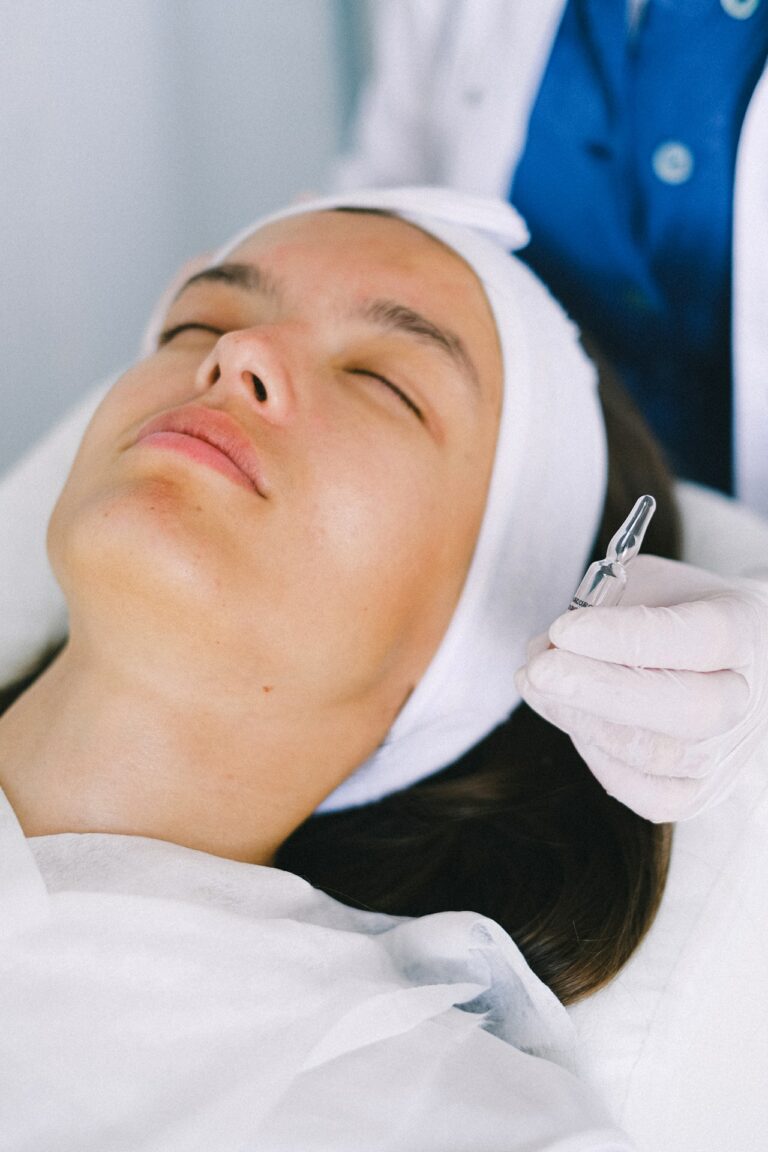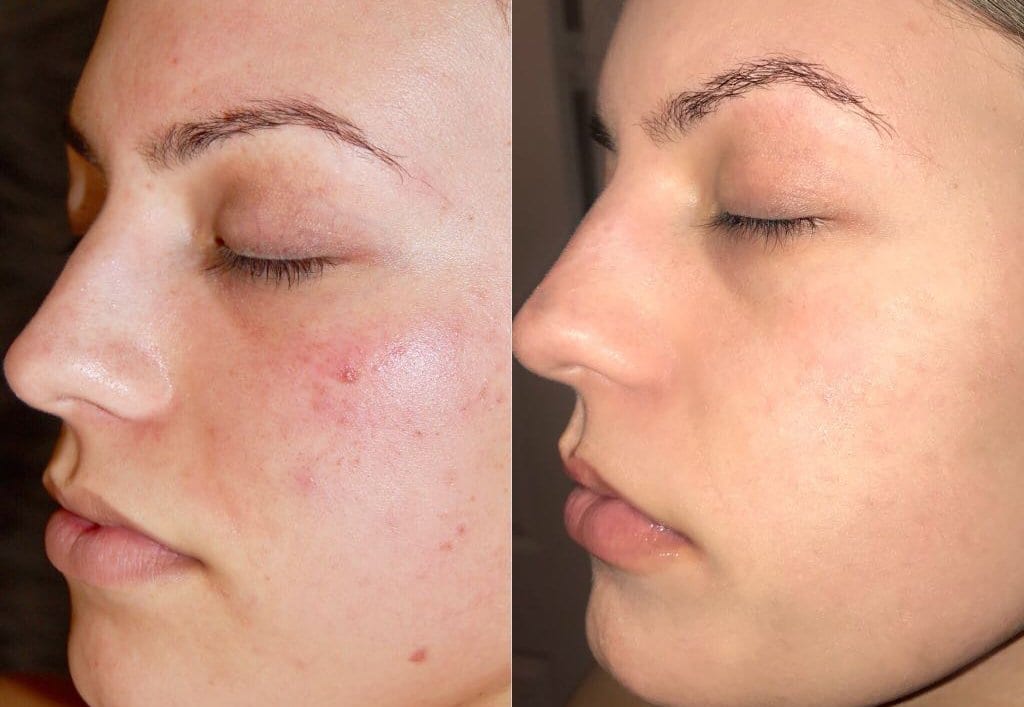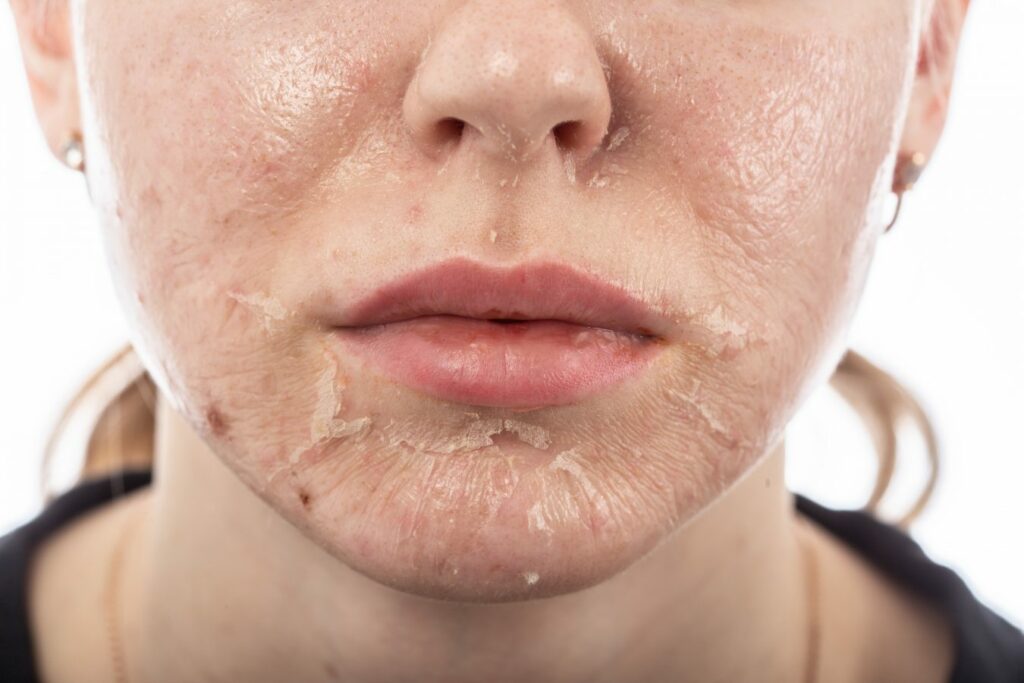What is Chemical Peel?
A chemical peel is a skin-resurfacing procedure in which a chemical solution is applied to skin to peel away the top layers. The skin that grows back after a chemical peel is smoother and younger looking.
Chemical peels are used to treat wrinkles, skin discoloration and scars — typically on the face. A chemical peel can be done alone or in combination with other cosmetic procedures. Chemical peels can be done at different depths — light, medium or deep — depending on your desired results. Each type of chemical peel uses a different chemical solution. Deeper chemical peels produce more-dramatic results, but also involve longer recovery times.
A chemical peel can diminish many signs of aging on the face as well as the hands, neck, and chest. Chemical peels are used to treat some types of acne and conditions that discolor the skin. Some chemical peels require downtime.
Whether you receive a chemical peel to diminish signs of aging or treat a skin condition, you can see:
- Fewer lines and wrinkles
- More even skin color
- Brighter complexion
- Smoother skin
Chemical peels is used to treat:
- Acne (some types)
- Age spots
- Discoloration
- Dull complexion
- Fine lines
- Freckles
- Melasma
- Rough-feeling skin
- Sun-damage skin
Warning
The results you see after getting a chemical peel depend largely on the skill of the person performing the peel. To protect your health and get the results you seek, you should see an expert for this treatment.
Before Procedure:
Before getting a chemical peel, some patients need to follow a pre-peel skin care plan for 2 to 4 weeks. This plan can improve results and reduce potential side effects.

What happens during a chemical peel?
On the day of your peel, you will first be prepped for the treatment. This includes cleansing your skin thoroughly. If you will have a deep peel, you will receive general anesthesia, which will put you to sleep. A deep peel must be performed in a surgical setting.
After you are prepped, you will applied the peel quickly and evenly. Professional will watch your skin carefully to remove the peel at just the right time. After the peel comes off, your skin will be treated as needed. Patients who get a medium peel may need cool compresses followed by a lotion or cream to soothe their skin.
What must I do after getting a chemical peel?
All peels that a professional performs require some at-home care. The following table shows you what you can expect.
What to expect after a chemical peel
- Refreshing or lunchtime peel
- Healing time: 1 to 7 days. Skin will be red. After the redness disappears, scaling may develop, which lasts 3 to 7 days.
- At-home care: Moisturize applied until the skin heals, followed by daily use of sunscreen.
- Follow-up visit: These peels may be repeated every 3 to 5 weeks.
- Example: Glycolic or Salicylic acid
2. Medium peel
- Healing time: 7 to 14 days. Skin will be red and swollen. Swelling worsens for 48 hours. Eyelids may swell. Blisters can form and break open. Skin crusts and peels off in 7 to 14 days.
- At-home care: Daily soaks for a specified period. Apply ointment after each soak. Take an antiviral medication for 10 to 14 days. Apply lotion or cream. Total avoidance of the sun until skin heals.
- Follow-up visit: Follow-up visit required after the procedure.
- Example: TCA peels, High-percentage glycolic acid and Jessner Peel.
3. Deep peel
- Healing time: 14 to 21 days. Area will be bandaged.
- At-home care: 4 to 6 daily soaks while healing. For 14 days, apply ointment after each soak. After 14 days, apply thick moisturizer as directed. Take an antiviral medication for 10 to 14 days. Total sun avoidance for 3 to 6 months.
- Follow-up visit: The next day, the dermatologist will want to see you. Several follow-up visits are required during the first week.
- Example: Phenol and high-percentage TCA peel.
Tips for getting best results :
Wash your face with cool water. Cold water will help soothe post-peel sensations.
Moisturize and hydrate. Since peels can temporarily compromise your skin’s protective barrier, it’s important to reinforce that barrier with a medium-to-thick moisturizer. Also, drink more water to help avoid dehydration, which could make your skin feel tight. If your skin dries and cracks, it can scar.
- Use Sunscreen. Your skin is more delicate after a peel, so avoid direct sun exposure, which can lead to even more visible signs of skin aging.
- Avoid rubbing or scratching skin treated with a chemical peel can cause an infection.
- Avoid strenuous workouts, dry saunas and steam rooms. Increased blood circulation to the face can intensify warming, tingling, itching, redness or other uncomfortable side effects on freshly peeled skin.
How long will the results last?
Most results are not permanent because our skin continues to age. If you have lots of sun-damaged skin, you will likely continue to see new spots and growths on your skin.
What is the safety record for chemical peels?
Professionals have been performing chemical peels for more than 50 years, with an excellent safety record.
Even people who have skin of color can safely have a chemical peel — but they should see a professional who has expertise using chemical peels to treat darker skin tones. Without this knowledge, people who have skin of color (i.e., African American, Asian, Latino) can develop permanent pigment problems.
A chemical peel isn’t for everyone. It is not advisable to undergo Chemical Peel procedure, if you:
- Are pregnant or breast-feeding
- Have taken the acne medication isotretinoin (Amnesteem, others) in the past six months
- Have a dark complexion
- Have red hair and a pale, freckled complexion
- Have facial warts

Results
A chemical peel improves the feel and look of the skin and helps in treating acne. The procedure further helps in decreasing the fine lines around the mouth and under the eyes.
The procedure improves the uneven skin tones or redness. In all the chemical peel procedures of any depth, the doctor advises avoiding sun exposure. It is also important to note that the results of the chemical peel treatment might not stay forever.
Results of Chemical Peel Procedures





